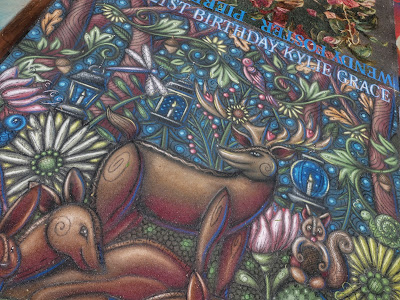In April I read eight books: one nonfiction, one graphic novel, one time-loop novel, one very long fantasy novel, three crime fiction novels, and one book of mystery short stories.
Nonfiction, Books about Books
Book Lust to Go (2010) by Nancy Pearl
I have read all of the Book Lust books by Nancy Pearl several times, and I enjoy them each time. I find something new every time, possibly because my tastes change over time. The subtitle for Book Lust to Go is "Recommended Reading for Travelers, Vagabonds, and Dreamers." Because the book was published in 2010, it could be considered out of date, but for me that is one of its charms.
Graphic novel
Here (2014) by Richard McGuire
This is a graphic novel that shows the reader the history of one room over the life of the house. It actually does more than that, because there are scenes showing the location /setting of the house going back before the house was built, back into prehistoric times. There is not much text to this book at all; the story is told more in pictures. It is 304 pages long. I think the book definitely bears rereading, probably multiple times.
Speculative Fiction / Time-loop
On the Calculation of Volume I (2020) by Solvej Balle, translated by Barbara J. Haveland
I first heard of this book late last year when my husband sent me an article from the Atlantic about it. The author is Danish; the book is very short, about 160 pages. In the article the novel was described as a time-loop story; I had never heard of that terminology for that type of time travel. One comparison is to the film, Groundhog Day, but this story is much more introspective and the story is handled very differently. The book is part of a seven volume work and only the first five have been translated to English at this time.
I liked the book but I was underwhelmed by the lack of resolution at the end. Obviously as part of a series of seven novels, I should not have expected anything else, but I was also disappointed in the repetitiveness of the story. Those who liked the story more than I did praised the meditative and philosophical aspects. I normally love things like that, so maybe I need to read it again more slowly. I plan to do that before moving on to book 2.
Fantasy
Royal Assassin (1996) by Robin Hobb
This is the second book in the Farseer Trilogy, following Assassin's Apprentice. The main character in this trilogy is FitzChivalry, a royal bastard who becomes the king's assassin in the first book, a fact that he and only a few others know. The story is very dark, with little relief. Fitz is shunned by most people in the court and leads a difficult life. Yet, I care about many of the characters, and loathe all the bad ones.
At this point I plan to continue reading the whole series, which includes a total of 16 books. Only problem is that each book is longer than the last. This book was 650 pages approximately. The third book in the series is closer to 750 pages. But I will persevere. I gave this book 5 stars and it is a page turner. I was introduced to this author and this series by Cath at Read-Warbler.
Crime Fiction
My Name is Michael Sibley (1952) by John Bingham
This was John Bingham's first novel. It is a very compelling and well written mystery; his writing is quiet and restrained. The narrator of the story is Michael Sibley, who tells the story of his school days with John Prosset and how he grew to hate him. See my review.
Come Death and High Water (1988) by Ann Cleeves
Ann Cleeves' first series featured George and Molly Palmer-Jones. George is a serious birder and worked for the Home Office before he retired; Molly is not a birder but often accompanies him on such activities. Cleeves wrote the first two books when she was living on an island with her husband, who ran a bird sanctuary there. The books in that series are set in locations related to birding. Come Death and High Water is set on an island with a bird observatory. I enjoyed the first book in the series because of the birds and the setting, but this book was even better, with an interesting group of characters and a more focused plot. There are eight books in the series and Cleeves wrote them between 1986 and 1996.
Reader, I Buried Them and Other Stories (2022) by Peter Lovesey
On the occasion of his hundredth short story, Peter Lovesey assembled this collection of his short stories. It includes sixteen stories, one piece of nonfiction about George Joseph Smith and the brides in the bath, and a poem. I started reading this book in 2022, and I reviewed ten of the stories at that time. It took me until this year to read the rest of the book, and my thoughts are here.
The Spellman Files (2007) by Lisa Lutz
I loved this book. I like books about families, and I like private detectives as the focus. In this case, the private detective agency is run and operated by the family. Izzy Spellman, the middle daughter, tells her story. As far as the crime goes, this book is lighter than most mysteries, but there is plenty of depth in the family relationships and issues. This is the first in a series and I will be reading more of the books. See my review.
The photos at the top and bottom of this post were taken at the end of April in our back area. The rest of the yard is a mess, but these two plants are making me happy. Click on the images for the best viewing quality.






















































